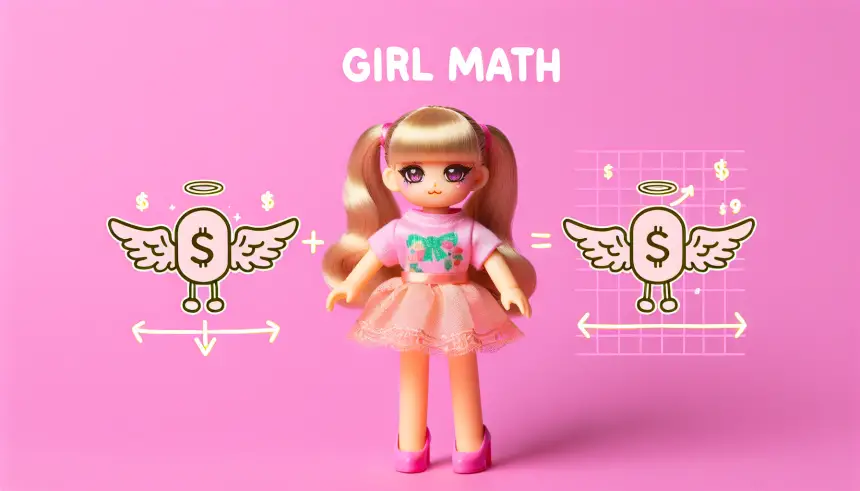Are you guilty? Have you ever convinced yourself that a ridiculously expensive handbag is a ‘sensible’ investment because it’s on sale? If this sounds familiar, you’ve probably fallen victim to the viral TikTok trend known as ‘GirlMath’. Now, before you roll your eyes and dismiss this as another frivolous fad, let’s take a moment to dissect this phenomenon. Could there be a grain of truth hidden beneath the layers of sarcasm and humor? Or is it just another excuse for reckless spending?
The Birth of ‘GirlMath’
When the ‘GirlMath’ trend first hit the TikTok scene, it was met with a mixture of amusement and outrage. The concept, often used to justify impulsive spending and questionable financial decisions, was seen by many as a mockery of women’s ability to handle their finances responsibly. But beneath the surface, could there be any merit to some of these ideas?
Let’s delve into some of the most common beliefs associated with the ‘GirlMath’ trend and evaluate the principles behind each one.
1. Cash Isn’t ‘Real Money’
In the whimsical world of ‘GirlMath,’ cash isn’t considered ‘real money.’ Of course, this is obviously false. Cash is very much real and spending it depletes your bank account. However, if you allocate a weekly budget for day-to-day expenses and stick to paying in cash, this notion might have a useful application by helping you stay within your budget.
Reality Check: Mostly wrong, but with a grain of truth.
2. Refunds Equal Free Money
According to ‘GirlMath,’ getting a refund after making a return feels like getting free money. While this isn’t entirely true—since it’s just your money being returned—it can feel rewarding. The key is to ensure the original purchase was within your budget and not part of an out-of-control spending spree.
Reality Check: Probably okay, as long as you’re careful.
3. Multiple Small Purchases vs. One Big Purchase
‘GirlMath’ often leads to avoiding big-ticket purchases, only to end up buying multiple smaller items that add up to the same amount. This is flawed logic. It’s more beneficial to think of your spending holistically and consider the longevity and quality of the items you buy.
Reality Check: This one misses the mark. Investing in quality is better.
4. The Return on Investment
Also, seemingly frivolous purchases can be justified as investments in your future self—boosting your self-image, confidence, or serving as family heirlooms. While this can hold some merit, it’s crucial these purchases fit within your budget and don’t lead to overspending.
Reality Check: Reasonable, up to a point.
5. Buying Now to Save Later
This logic suggests that spending money now to avoid larger expenses later is a sound strategy. This isn’t free money, but it can make financial sense, especially if buying something out-of-season at a deep discount.
Reality Check: Not entirely accurate, but not a bad approach.
6. Calculating Cost Per Wear
Another principle involves calculating the cost per wear for expensive items. This is a sensible idea, but estimating future use can be tricky.
Reality Check: Sensible in theory, tricky in practice.
The Behavioral Pitfalls of ‘GirlMath’
At the end of the day, ‘GirlMath’ reveals many of the behavioral pitfalls everyone—regardless of gender—can fall into. While it’s important to make rational financial decisions, money should ultimately serve as a means to an end, not an end in itself.
Real Financial Advice: The 50-30-20 Rule
Experts recommend the 50-30-20 rule for good financial health: allocate 50% of your budget to essentials (rent, mortgage, insurance, car payments, food), 30% to non-essentials (eating out, activities), and 20% to savings or debt repayment. This rule provides a clear framework for managing finances responsibly.
The Final Takeaway
So, does ‘GirlMath’ add up? It’s a mixed bag. While some principles are clearly flawed, others could potentially be useful when applied responsibly. The key is to make informed decisions, spend on things you value, and save enough to meet your future goals.
So next time you find yourself rationalizing that splurge, just ask yourself—does this align with my financial goals, or am I just doing some creative math?





